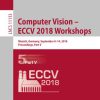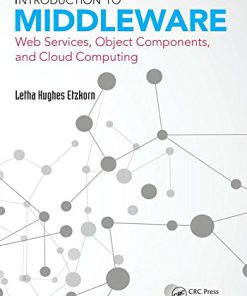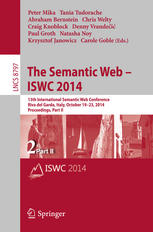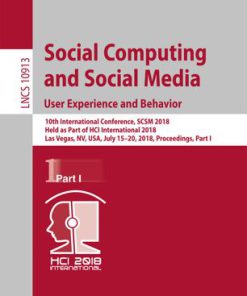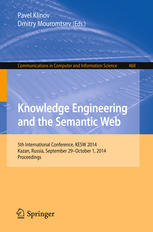Innovations in Knowledge Management 1st Edition by Liana Razmerita,Gloria Phillips Wren,Lakhmi Jain 9783662478271 3662478277
$50.00 Original price was: $50.00.$25.00Current price is: $25.00.
Innovations in Knowledge Management 1st Edition by Liana Razmerita,Gloria Phillips Wren,Lakhmi Jain – Ebook PDF Instant Download/Delivery:9783662478271,3662478277
Full download Innovations in Knowledge Management 1st Edition after payment
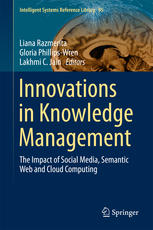
Product details:
ISBN 10:3662478277
ISBN 13:9783662478271
Author:Liana Razmerita,Gloria Phillips Wren,Lakhmi Jain
This book discusses emerging trends in the field of managing knowledge work due to technological innovations. The book is organized in 3 sections. The first section, entitled “Managing Knowledge, Projects and Networks”, discusses knowledge processes and their use, reuse or generation in the context of an organization. The second section, entitled “Managing Knowledge using Social Media”, focuses on factors influencing adoption and usage, the role of social media in managing knowledge, and factors that influence employees’ acceptance and participation. The third section brings into discussion new approaches and technologies for acquiring knowledge. The book will be useful to both academics engaged in research in knowledge management and practitioners who are considering or implementing strategies for managing one of their most important resources.
Innovations in Knowledge Management 1st Table of contents:
Part IManaging Knowledge, Projectsand Networks
1 Advances in Knowledge Management: An Overview
Abstract
1.1 Introduction
1.2 The Evolution of Knowledge Management (KM)—A Historical Perspective
1.3 Managing Knowledge, Projects and Networks
1.4 Theoretical Perspectives in KM
1.5 Towards a Network-Centric Collaborative Approach
1.5.1 Networked Organization
1.6 Managing Knowledge Using Social Media
1.6.1 New Approaches and Technologies for Capturing/Acquiring Knowledge
1.7 Conclusions
1.7.1 Organization of the Book
References
2 A Methodology for Systematic Project Knowledge Reuse
Abstract
2.1 Motivation
2.2 Knowledge Management: Processes, Roles and Technological Support
2.2.1 The Knowledge Management Process
2.2.2 Roles in Knowledge Management
2.2.3 Technological Support of Knowledge Management
2.2.4 The Need for a New Project Knowledge Reuse Methodology
2.3 Project Knowledge Reuse—A Methodology
2.3.1 Types of Lessons Learned Sessions
2.3.2 Project Knowledge Reuse Methodology
2.3.2.1 Double-Cycled Lessons Learned Process
2.3.2.2 Roles and Responsibilities
2.3.2.3 Knowledge-Centric Project Management Process
2.3.3 Exemplarily Implementation of the Project Knowledge Reuse Methodology
2.4 Summary
References
3 Knowledge Management and Enterprise Social Networking: Content Versus Collaboration
Abstract
3.1 Introduction
3.1.1 Purposes of This Paper
3.1.2 Outline of This Paper
3.2 Background: Knowledge Management and Social Media
3.2.1 Enterprise Knowledge Management
3.2.2 Social Media and Web 2.0
3.3 Enterprise Social Networking
3.3.1 Definition
3.3.2 Limitations of Enterprise Social Networking
3.3.3 Other Issues Concerning ESN
3.3.4 Selected Previous Research on ESN
3.4 Content Models of Knowledge Management
3.4.1 Repository Versus Router Models of Knowledge
3.4.2 Centralized Versus Decentralized Control
3.4.3 Prepare Knowledge Ahead of Time or Use Just-in-Time Knowledge
3.4.4 Embedding Knowledge Content in Processes
3.4.5 Management Philosophy and Content
3.4.6 Gathering, Preparing and Embedding Content for Centralized Repositories or Routers
3.4.7 Content Research in Knowledge Management
3.5 Collaboration Models of Knowledge Management
3.5.1 Push and Pull in Collaboration
3.5.2 Collaboration and Communication
3.5.3 Embedding Collaboration into Processes
3.5.4 Management Philosophy
3.5.5 Collaboration Research in Knowledge Management
3.6 Least Effort Theory, Exchange Theory and Pecking Theory
3.6.1 Principle of Least Effort
3.6.2 Social Exchange Theory
3.6.3 Pecking Order Theory in Finance and Knowledge Management
3.6.4 Content and Collaboration Pecking Order
3.7 Contributing Personal Knowledge: Content Versus Collaboration
3.7.1 Supply and Demand of Personal Knowledge for Content
3.7.2 Supply and Demand of Personal Knowledge for Collaboration
3.7.3 Content Versus Collaboration—Value of Contributions
3.8 Integrating Content and Collaboration
3.8.1 Embedding Content or Collaboration into Processes
3.8.2 Putting Content and Collaboration Adjacent to Each Other
3.8.3 Collaborated Content Versus Turning Collaboration into Content
3.8.4 Emerging Research Issues Re Content and Collaboration
3.9 PriceWaterhouseCoopers (PWC) Case Study
3.9.1 Motivation for Adopting Jive
3.9.2 Key System Characteristics
3.9.3 Impact of Culture on ESN
3.10 Emerging Research Issues
3.11 Summary, Contributions and Extensions
Acknowledgements
References
4 Social Media and Employee Affiliation: Networks of Practice as New Supra-Organizational Entities
Abstract
4.1 Introduction
4.2 Literature Review
4.2.1 The Impact of Social Media
4.2.2 Communities and Networks of Practice
4.2.3 Employee Affiliation
4.2.4 Influence of Information and Communication Technologies on Employees’ Sense of Affiliation
4.3 Research Design
4.3.1 Data Collection
4.3.2 Methods
4.4 Data Analysis and Results
4.5 Discussion and Connections with Other Research
4.6 Conclusion and Outlook
Acknowledgments
References
Part IIManaging Knowledge Using SocialMedia: Factors InfluencingAdoption and Usage
5 Studying Social Software Adoption by Management Consultants: Use and Application Categories for Kn
Abstract
5.1 Introduction
5.2 Theoretical Background
5.2.1 Management Consultancy and Knowledge Management
5.2.2 Social Software
5.3 Literature Analysis
5.3.1 Social Software Research
5.3.2 Use of Social Software for Knowledge Management
5.3.3 Deduction of Use Categories
5.4 Qualitative Expert Study
5.5 Results and Discussion
5.5.1 Use Categories
5.5.1.1 Knowledge Sharing
5.5.1.2 Knowledge Seeking
5.5.1.3 Communication
5.5.1.4 Collaboration
5.5.1.5 Summary
5.5.2 Application Categories
5.6 Conclusion and Outlook
References
6 Social Media Within German Companies—An Interview-Based Analysis
Abstract
6.1 Introduction
6.2 Methodology
6.3 Related Work
6.3.1 Influence of Social Media on Knowledge Sharing
6.3.2 Employees’ Acceptance and Participation
6.3.3 Employees’ Motivation to Share Knowledge
6.4 Interview Results
6.5 Discussion
6.5.1 Influence of Social Media on Internal Knowledge Sharing
6.5.2 Employees’ Acceptance and Participation
6.5.3 Employees’ Motivation to Share Knowledge
6.6 Conclusion and Future Work
References
7 Social Media Applications for Knowledge Exchange in Organizations
Abstract
7.1 Introduction—The Knowledge Society 2.0
7.1.1 Relevance of This Article
7.1.2 Structure of This Article
7.2 Social Media Based Knowledge Exchange in Organizations
7.2.1 Social Media as a Medium for Knowledge Exchange
7.2.2 Social Media as a Success Factor for Knowledge Exchange?
7.2.2.1 Corporate Setting
7.2.2.2 Science Setting
7.2.3 Talent Onboarding
7.2.4 Technology Platforms
7.2.5 The Human Factor in Knowledge Exchange via Social Media in Professional Contexts
7.3 Applied Social Media for Knowledge Exchange
7.3.1 Methodology
7.3.2 Research Project: iNec
7.3.2.1 Requirement Analysis
7.3.2.2 Willingness to Disclose Personal Information
7.3.2.3 Social Media Etiquette
7.3.2.4 Summary Corporate Setting
7.3.3 Extension of Context: From an Industry to a Science Setting
7.3.3.1 A Social Network for Scientific Cooperation
7.3.3.2 Sharing Non-personal Sensitive Data in Social Networks?
7.4 Conclusion
Acknowledgments
References
Part IIINew Approaches and Technologiesfor Knowledge Acquisition
8 Context-Aware and Process-Centric Knowledge Provisioning: An Example from the Software Development
Abstract
8.1 Introduction
8.2 Overview of Approaches in the Software Engineering Domain
8.3 Current Issues
8.3.1 Problem Areas
8.3.2 Basic Requirements
8.4 Automated Knowledge Provisioning Approach
8.4.1 Abstract Knowledge Provisioning Concept
8.4.2 Knowledge Provisioning Framework
8.5 Automated Knowledge Provisioning in Processes
8.5.1 Knowledge Provisioning Requirements
8.5.2 Knowledge Provisioning Components
8.5.3 Knowledge Provisioning Process
8.5.4 Knowledge Provisioning Example
8.6 Knowledge-Based Contextual Adaptation of Processes
8.6.1 Concept for Knowledge-Based Contextual Adaptation of Processes
8.6.2 Requirements for Knowledge-Based Contextual Adaptation of Processes
8.6.3 Extended Concept for Knowledge-Based Contextual Adaptation of Processes
8.7 Knowledge-Based Collaborative Process Support
8.7.1 Advanced Collaboration Requirements
8.7.2 Collaboration Support Concept
8.8 Summary and Conclusion
Glossary
References
Additional Resources on Related Topics: Books
Articles
Conferences and Workshops
9 Towards Near Real-Time Social Recommendations for the Enterprise
Abstract
9.1 Introduction
9.2 Background and Related Work
9.2.1 Distributed Organisational Environments
9.2.2 Classification of Personalisation Approaches
9.2.2.1 Collaborative Filtering
9.2.2.2 Content-Based Recommendation
9.2.2.3 Knowledge-Based Recommendation
9.2.2.4 Hybrid Algorithms
9.2.2.5 Top-K Approach
9.2.3 Graph-Based Approaches
9.2.3.1 Semantic Distance
9.2.3.2 Spreading Activation
9.2.3.3 Comparison to Neural Networks and PageRank
9.3 Use Case and Requirements
9.3.1 Use Cases
9.3.2 Personalisation Requirements for the ADVANSSE Distributed Platform
9.4 The ADVANSSE Distributed Social Platform
9.4.1 Protocols Used for Data Synchronisation
9.4.1.1 SPARQL Update
9.4.1.2 The Extensible Messaging and Presence Protocol
9.4.1.3 Using XMPP and SPARQL Update Together
9.4.2 ADVANSSE Architecture
9.4.3 ADVANSSE Server
9.4.4 ADVANSSE-Connected Social Platform
9.5 Application of Spreading Activation to ADVANSSE
9.5.1 Spreading Activation Algorithm
9.5.1.1 Basic Spreading Activation
9.5.1.2 Constrained Spreading Activation
9.5.2 Application to ADVANSSE Use Cases
9.5.3 Qualitative Evaluation
9.6 Demonstrator Implementation
9.6.1 Demonstrator Data
9.6.1.1 User Profiles, Tags and Posts from StackExchange
9.6.1.2 StackExchange Data Extraction Process
9.6.1.3 Background Knowledge from DBpedia
9.6.1.4 Data Schema: CISCO ERT
9.6.2 ADVANSSE Server
9.6.2.1 XMPP Server: Openfire
9.6.2.2 Personalisation Component
9.6.2.3 RDF Meta-Data Store: Jena Fuseki
9.6.2.4 Link Resolver
9.6.3 Recommendation Algorithm
9.6.3.1 Implementation
9.6.3.2 Benchmark Results
9.6.3.3 Data Storage
9.6.4 ADVANSSE Connected Social Platform
9.7 Conclusions
Acknowledgements
References
10 Enriching Knowledge in Business Process Modelling: A Storytelling Approach
Abstract
10.1 Introduction
10.2 Main Concepts and Related Work
10.2.1 Process-Oriented Knowledge Management and the Role of Process-Modelling
10.2.2 Workflow Paradigm
10.2.3 The Storytelling Approach
10.3 Process Modelling with Storytelling
10.3.1 The Modelling Tool
10.3.2 Storytelling Versus Workflow
10.4 Case Study
10.4.1 Case Study Design
10.4.2 Case Description and Results
10.5 Conclusions
People also search for Innovations in Knowledge Management 1st :
innovations in knowledge transfer and continuity of care
innovations kona
innovator’s mindset book study
innovator’s mindset summary
innovation management quizlet
Tags:
Liana Razmerita,Gloria Phillips Wren,Lakhmi Jain,Management,Innovations
You may also like…
Computers - Computer Science
Computers - Programming
Business & Economics
Social Media for Knowledge Sharing in Automotive Repair 1st Edition Patric Finkbeiner (Auth.)
Computers - Computer Science
Computers - Networking
Computers - Computer Science


